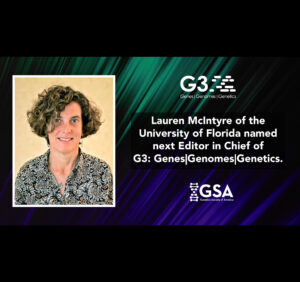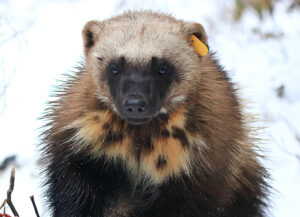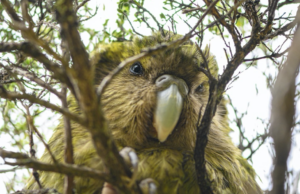Enter your address to receive notifications about new posts to your email.
Articles tagged G3 Journal
(247 results)
-
New members of the GSA Board of Directors: 2023–2025
We are pleased to announce the election of five new leaders to the GSA Board of Directors: 2023 Vice President/2024 President Mariana Wolfner Distinguished Professor of Molecular Biology and Genetics and Stephen H. Weiss Presidential Fellow My research has focused on the genes and pathways that mediate sexual development and reproduction, primarily in Drosophila. From…
-
Science & Publishing
New Associate Editor joins G3
We are pleased to announce the appointment of Rodrigo Reyes as the new Associate Editor at G3. Rodrigo Reyes Associate Editor Rodrigo Reyes is currently an Associate Professor in the Department of Biology at McGill University and a Canada Research Chair Tier II in Chromosome Biology. He received his BSc in Biology at the National Autonomous University of Mexico, Mexico, MSc at…
-
Three new editors join GENETICS, G3
Three new editors are joining GSA journals, GENETICS and G3: Genes|Genomes|Genetics. We’re excited to welcome Arash Bashirullah, Noah Whiteman, and Yun Li to their roles as Senior Advisory Editor for GENETICS, Genome Report Senior Editor for G3, and Associate Editor for GENETICS, respectively. Arash Bashirullah Senior Advisory Editor, GENETICS Dr. Arash Bashirullah is a Professor…
-
News
Genetics Society of America announces Lauren McIntyre as new Editor in Chief of G3
The Genetics Society of America is pleased to announce that Lauren McIntyre of the University of Florida will become the next Editor in Chief of G3: Genes|Genomes|Genetics beginning in January 2023.
-
Science & Publishing
The population genetics of microbial moonwalking
On scientific laws, classic dances, and a new study about molecular evolution…in reverse.
-
GSA welcomes new Peer Review Coordinator
The GSA team welcomes Jenna Daenzer, PhD, as the new Peer Review Coordinator! Jenna will be involved with GENETICS and G3: Genes|Genomes|Genetics, reviewing incoming manuscripts for quality and administering programs like the Peer Review Training Program. Can you tell us a little bit about your background and your career trajectory? I grew up in the…
-
Science & Publishing
Wolverine genome assembly sets a standard for conservation geneticists
Chromosome-level assembly of the North American wolverine sets a new standard for the weasel (Mustelidae) family.
-
New Associate Editor joins G3
We are pleased to announce the appointment of Natasha Kirienko as the new Associate Editor at G3. Natasha Kirienko Associate Editor Natasha Kirienko is an Associate Professor at Rice University. Her research focuses on the broad cellular roles of mitochondria, whose dysfunction is increasingly recognized as a key contributor in a wide variety of diseases,…
-
New editors are joining G3
G3: Genes|Genomes|Genetics is pleased to announce two new editors: Siu Sylvia Lee and Minou Nowrousian. Siu Sylvia Lee Senior Editor Siu Sylvia Lee is a Professor in the Department of Molecular Biology and Genetics at Cornell University. She received a BA in Biochemistry from Rice University in 1995 and a PhD from Baylor College of…
-
As New Zealand’s endangered kākāpō rebounds, researchers measure genomic signs of inbreeding
Efforts to diversify an inbred population must take into account the genetic backgrounds of the founders. A female kākāpō named Rimu, whose parents are both Stewart Island founders.Photo by Jake Osborne. The nocturnal flightless parrot known as the kākāpō was once abundant throughout New Zealand. But after the introduction of mammalian predators, the species all…
-
Naturally occurring small molecules correct mutant proteins in living cells
Yeast screens explore the therapeutic potential of chemical rescue. Anyone who’s worked in a lab knows that sinking feeling of discovering that the temperature of an incubator, carefully set the night before, has crept up high enough to ruin the experiment. While such a mishap usually spells disaster, occasionally, it can lead to an unexpected…











